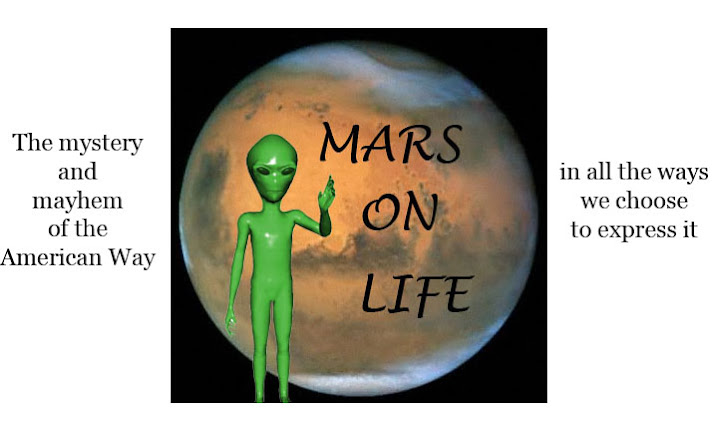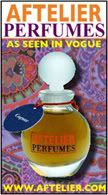
A friend called me the other day, lamenting that the writers' strike had stripped the public of the pleasure of watching the annual Golden Globes red carpet parade. She was worried about the Oscars, too. Red carpets are Brobdingnagian events, even when you live in Los Angeles and your appetite for spectacle is dulled by geographic association.
In the Los Angeles cultural catalogue, no spectacle is more sacralized than the Oscars, and the red carpet parade is a big part of the reason. Even though Hollywood fashion, like Young Hollywood culture, has mostly retrenched into political correctness, the annual awards shows still look a good deal like Babylon when you're eating popcorn on a sofa in the snowy Midwest.
The Oscars have always been high season for fashion Schadenfreude: Bjork's dead swan, Demi's girdled cocktail pajamas, Barbra's see-through schoolgirl Scaasi.
And then there was Cher's 1986 presenter's outfit, designed by Bob Mackie.
Mackie and Cher had forged a collaboration a decade and a half earlier, when he designed costumes for the Sonny and Cher Comedy Hour. Sonny and Cher, as I have said before, quickly fell from being Hollywood's most happening hippies into awkward cartoon hipsterdom. By 1971 they had dropped any pretense of being socially relevant and had positioned themselves as a sofa-safe family unit.
Comedy hours were a favorite entertainment of Nixon-era America, with Laugh-In, The Smothers Brothers Comedy Hour and The Carole Burnett Show winning big in the ratings game. The format of the shows mirrored that of vaudeville, with multiple costume changes.
Mackie had been designing for Burnett when he got the nod to design for Cher. Whereas with Burnett he costumed for comedy, with Cher he costumed for glamour. The sixties had sou nded the death knell of Old Hollywood razzle-dazzle. Mackie, who grew up admiring the costume panoply of the Busby Berkeley musical, found in Cher an ideal vehicle for his most outré ideas.
nded the death knell of Old Hollywood razzle-dazzle. Mackie, who grew up admiring the costume panoply of the Busby Berkeley musical, found in Cher an ideal vehicle for his most outré ideas.
Mackie's designs for Cher were never lofty, but nor were they gormless. If anything, they were an exegesis of the designer's happiest cinematic memories. Translated through Mackie's pen, the matrix of Golden Age Hollywood became a burlesque of gay camp. Outrageous enough to provoke Midwestern censorship, the get-ups had America tuning in weekly to see what appeared to be an inexhaustible supply of feathers, sequins, and skin. The costumes transcended the theatrical and were unique signifiers of made-in-America excess. They gave a tongue-in-cheek perspective of Hollywood's corniest filmic excesses, and they were exceptionally well made.
Cher, of course, had the perfect physique for the garments (perfect armpits, she noted). A size six with a long, elegant torso and non-traditional tastes, Cher was ripe for any gimmickry Mackie chose to drape across her frame. Cher also liked to play with identity and possessed an unerring instinct for ruffling the feathers of status quo. The more outrageous the idea, the more Cher flaunted it on the weekly television stage. When Cher's forays into television ended, she continued to wear Mackie garments as she ventured into the movies. For two decades, her public persona was inextricably linked to the Mackie vision and their symbiotic relationship vaulted her into the superstar stratosphere.
Together, the  designer and the singer contrived a specialty Americana far removed from the syntax of Seventh Avenue. Mackie did not, however, escape Seventh Avenue's scrutiny. Were the Mackie designs legitimate fashion or were they strictly theatrical? How did they play outside the Hollywood scaffold?
designer and the singer contrived a specialty Americana far removed from the syntax of Seventh Avenue. Mackie did not, however, escape Seventh Avenue's scrutiny. Were the Mackie designs legitimate fashion or were they strictly theatrical? How did they play outside the Hollywood scaffold?
Mackie was probably the designer responsible for a mass-market sequin infiltration that lasted throughout the 1980s. The more audacious fashion zeitgeist of that decade was custom-tailored for the flashy amplitude of the Mackie portfolio. Although his body of work may have appeared overcooked, it was decidedly unpretentious. Each costume contained the designer's fine understanding of humor, something he had perfected on The Carol Burnett show and which would only find the same beautiful synthesis years later with another American icon: Barbie.
Tuesday, January 15, 2008
Bob Mackie and Cher: And the Bead Goes On
Subscribe to:
Post Comments (Atom)









7 comments:
Now we know who to blame for those sequins! I remember the Bob Mackie Barbies, their costumes were absolutely unbelievable. It's funny to think about the contrast between his designs for Carol Burnett and Cher...
You know what's really sad, Heather, is that despite his craftsmanship Mackie was unable to work in the vernacular of Seventh Avenue (IMO, of course). Even as late as 2001 his couture reflected a "Dynasty" aesthetic (the pieces that were street-wearable, that is).
He rules his own kingdom, but that domain isn't terribly mutable. Barbie was the perfect outlet.
Though he may have been derided, it's nice to see that an appreciation for gliz/sequins (albeit an ironic appreciation...) is once again back as seen in the streets of London/New York/Stockholm/Berlin...
I loved his collaboration with Cher. I loved the outfits she wore on her show with Sonny too! I wish there was someone doing wild and memorable red carpet looks now. You only live once; why spend your whole life in a tasteful goddess gown. Bring Bjork and Cher back!
Yes, it really did reflect a Dynasty aesthetic. I'm sure he was excellent at his craft of choice - flash - but it just seems too 'showstopper' for me...though i get the perception of this is what you are critiquing.
A.- i must admit that i have always liked cher no matter what everyone has always said about her.
i think she was always very avant-garde for her time, always pulling off very "difficult" outfits and continuing doing so regardless the critics and other annoyances. I think this post is proving i was right! :)
B.- I really hope the Oscar's night won't get canceled
I didn't know he costumed Carol Burnett, that's very interesting. Shows how versatile he is!
Post a Comment